Flatiron Building
The Flatiron Building, originally the Fuller Building, is a triangular 22-story, 285-foot-tall (86.9 m) steel-framed landmarked building at 175 Fifth Avenue in the eponymous Flatiron District neighborhood of the borough of Manhattan in New York City. Designed by Daniel Burnham and Frederick P. Dinkelberg, and known in its early days as "Burnham's Folly", it was completed in 1902 and originally included 20 floors. The building sits on a triangular block formed by Fifth Avenue, Broadway, and East 22nd Street—where the building's 87-foot (27 m) back end is located—with East 23rd Street grazing the triangle's northern (uptown) peak. The name "Flatiron" derives from its triangular shape, which recalls that of a cast-iron clothes iron.
The Flatiron Building was developed as the headquarters of construction firm Fuller Company, which acquired the site from the Newhouse family in May 1901. Construction proceeded at a very rapid pace, and th...Read more
The Flatiron Building, originally the Fuller Building, is a triangular 22-story, 285-foot-tall (86.9 m) steel-framed landmarked building at 175 Fifth Avenue in the eponymous Flatiron District neighborhood of the borough of Manhattan in New York City. Designed by Daniel Burnham and Frederick P. Dinkelberg, and known in its early days as "Burnham's Folly", it was completed in 1902 and originally included 20 floors. The building sits on a triangular block formed by Fifth Avenue, Broadway, and East 22nd Street—where the building's 87-foot (27 m) back end is located—with East 23rd Street grazing the triangle's northern (uptown) peak. The name "Flatiron" derives from its triangular shape, which recalls that of a cast-iron clothes iron.
The Flatiron Building was developed as the headquarters of construction firm Fuller Company, which acquired the site from the Newhouse family in May 1901. Construction proceeded at a very rapid pace, and the building opened on October 1, 1902. A "cowcatcher" retail space and a one-story penthouse were added shortly after the building's opening. The Fuller Company sold the building in 1925 to an investment syndicate. The Equitable Life Assurance Society took over the building after a foreclosure auction in 1933 and sold it to another syndicate in 1945. Helmsley-Spear managed the building for much of the late 20th century, renovating it several times. The Newmark Group started managing the building in 1997. Ownership was divided among several companies, which started renovating the building again in 2019. Jacob Garlick agreed to acquire the Flatiron Building at an auction in early 2023, but failed to pay the required deposit, and three of the four existing ownership groups took over the building. In October 2023, it was announced that the building would be converted to residential condominiums.
The Flatiron Building's facade is divided vertically into three sections, similarly to the components of a classical column. The three-story base is clad with limestone, while the upper stories are clad with glazed terracotta. The building's steel frame, designed by structural engineering firm Purdy and Henderson, was intended to withstand four times the maximum wind force of the area. Called "one of the world's most iconic skyscrapers and a quintessential symbol of New York City", the building anchors the south (downtown) end of Madison Square and the north (uptown) end of the Ladies' Mile Historic District. The neighborhood around it is called the Flatiron District after its signature, iconic building. The building was designated a New York City landmark in 1966, was added to the National Register of Historic Places in 1979, and was designated a National Historic Landmark in 1989. A survey in 2023 found that the Flatiron Building was the fourth-most-loved building in the United States.
At the beginning of March 1901, media outlets reported that the Newhouse family was planning to sell "Eno's flatiron" for about $2 million to Cumberland Realty Company,[1][2][3] an investment partnership created by Harry S. Black, CEO of the Fuller Company.[4] The Fuller Company was the first true general contractor that dealt with all aspects of buildings' construction (except for design), and they specialized in erecting skyscrapers.[5] Black intended to construct a new headquarters building on the site, despite the recent deterioration of the surrounding neighborhood.[6] At the end of that March, the Fuller Company organized a subsidiary to develop a building on the site.[5][7][8] The sale was finalized in May 1901.[9]
Development Plans and site-clearingBlack hired Daniel Burnham's architectural firm to design a 21-story building on the site in February 1901.[10] It would be Burnham's first in New York City,[11] the tallest building in Manhattan north of the Financial District,[12] and the first skyscraper north of Union Square (at 14th Street).[13] The Northwestern Salvage and Wrecking Company began razing the site in May 1901, after the majority of existing tenants' leases had expired. Most of the Cumberland's remaining tenants readily vacated the building in exchange for monetary compensation.[14] The sole holdout was Winfield Scott Proskey, a retired colonel who refused to move out until his lease expired later that year.[14][15] Cumberland Realty unsuccessfully attempted to deactivate Proskey's water and gas supply, and Proskey continued to live in the Cumberland while contractors demolished all of the surrounding apartments.[16] By the end of May 1901, Cumberland Realty discovered that Proskey was bankrupt,[17][18] and his creditors took over the lease and razed the rest of the Cumberland that June.[17][19]
The New York Herald published an image of the site on June 2, 1901, with the caption "Flatiron Building".[20] The project's structural engineer, Corydon Purdy, filed plans for a 20-story building on the site that August.[21][22] The Flatiron Building was not the first building of its triangular ground-plan, although it was the largest at the time of its completion. Earlier buildings with a similar shape include a triangular Roman temple built on a similarly constricted site in the city of Verulamium, Britannia;[23][24] Bridge House, Leeds, England (1875);[25] the I.O.O.F. Centennial Building (1876) in Alpena, Michigan;[26] and the English-American Building in Atlanta (1897).[27] The Real Estate Record and Guide published a drawing of the building in October 1901; though the drawing was captioned "The Cumberland", it was very similar to the Flatiron Building's final design.[28][a]
ConstructionThe Atlantic Terra Cotta Company began producing architectural terracotta pieces for the building in August 1901. Around the same time, the New York City Department of Buildings (DOB) indicated that it would refuse to approve Purdy's initial plans unless the engineers submitted detailed information about the framework, fireproofing, and wind-bracing systems.[29] Purdy complied with most of the DOB's requests, submitting detailed drawings and documents, but he balked at the department's requirement that the design include fire escapes.[30] For reasons that are unclear, the DOB dropped its requirement that the building contain fire escapes.[31] In addition, the building was originally legally required to contain metal-framed windows, although this would have increased the cost of construction.[31][32] The city's Board of Building Commissioners had granted an exemption to Black's syndicate, prompting allegations of favoritism.[32][33] A new Buildings Department commissioner was appointed at the beginning of 1902, promising to enforce city building codes; this prompted general contractor Thompson–Starrett Co. to announce that the building's window frames would be made of fireproof wood with a copper coating.[34]
 Construction phases
Construction phasesThe building's steel frame was manufactured by the American Bridge Company in Pennsylvania.[35][36] The frame had risen above street level by January 1902.[11][37] Construction was then halted for several weeks, first because of a delay in steel shipments, then because of a blizzard that occurred in February.[37] Further delays were caused by a strike at the factory of Hecla Iron Works, which was manufacturing elevators and handrails for the building.[38] The steel was so meticulously pre-cut that, according to The New York Times, the steel pieces could be connected "without so much as the alteration of a bored hole, or the exchange of a tiny rivet".[39][40] Workers used air-powered tools to rivet the steel beams together, since such equipment was more efficient than steam-powered tools at conducting power over long distances.[41][42] The frame was complete by February 1902,[11] and workers began installing the terracotta tiles as the framework of the top stories was being finished.[43] By mid-May, the building was half-covered by terracotta tiling.[11][44] The terracotta work was completed the next month,[45] and the scaffolding in front of the building was removed.[45][46] The Fifth Avenue Building Company had invested $1.5 million in the project.[46]
Officials of the Fuller Company announced in August 1902 that the structure would be officially named after George A. Fuller, founder of the Fuller Company and "father of the skyscraper", who had died two years earlier.[47] By then, the site had been known as the "flatiron" for several years;[42] according to Christopher Gray of The New York Times, Burnham's and Fuller's architectural drawings even labeled the structure as the "Flatiron Building".[48] Although the Fuller name was used for some time after the building's completion,[21] locals persisted in calling it the Flatiron, to the displeasure of Harry Black and the building's contractors.[49] In subsequent years, the edifice officially came to be known as the Flatiron Building,[50][51] and the Fuller name was transferred to a newer 40-story structure at 597 Madison Avenue.[51][52]
Fuller Company ownershipIn the weeks before the official opening, the Fuller Company distributed six-page brochures to potential tenants and real-estate brokers.[53] The brochures advertised the building as being "ready for occupancy" on October 1, 1902.[53][54] The Fuller Company took the 19th floor for its headquarters.[55] When completed, the Flatiron Building was much taller than others in the neighborhood; when New York City Fire Department officials tested the building's standpipes in November 1902, they found that "the 'flat-iron' building would be of great aid in fighting the fire" in any surrounding buildings.[56] It was the seventh-tallest building in Manhattan, behind the Park Row Building, Manhattan Life Insurance Building, St. Paul Building, American Surety Building, American Tract Building, and Empire Building.[57] Following the building's completion, the surrounding neighborhood evolved from an entertainment district to a commercial hub.[58][59] Initially, the building was topped by a flagpole, which was maintained by one man, "Steeplejack" Kay, for four decades.[60] Henry Clay Frick expressed interest in purchasing the structure in 1904 for $5 million, but he ultimately withdrew his offer.[61]
ModificationsDuring the building's construction, Black had suggested that the "cowcatcher" retail space be installed at the northern tip of the building, occupying 93 square feet (8.6 m2) of unused space at the extreme northern end of the lot. This would maximize use of the building's lot and produce some retail income.[62] Burnham initially refused to consider Black's suggestion, and, in April 1902, Black asked a draftsman at the Fuller Company to draw up plans for the retail space.[63] Black submitted plans for the annex to the DOB in May 1902. The DOB rejected the initial plans because the walls were too thin, but the department approved a revised proposal that June, to Burnham's disapproval.[64] The retail space in the "cowcatcher" was leased by United Cigar Stores.[65]
Another addition to the building not in the original plan was the penthouse, which was constructed after the rest of the building had been completed.[66][67] By 1905, the Fuller Company needed to expand its technical drawing facilities. As a result, the company filed plans for a penthouse with the New York City Department of Buildings that March.[68] The penthouse would cost $10,000 and would include fireproof partitions and a staircase from the existing 20th floor.[68][69] The penthouse, intended for use as artists' studios, was quickly rented out to artists such as Louis Fancher, many of whom contributed to the pulp magazines which were produced in the offices below.[67]
Early tenantsBesides the Fuller Company, the Flatiron's other original tenants included publishers such as magazine publishing pioneer Frank Munsey,[70] American Architect and Building News, and a vanity publisher.[71] An insurance company, the Equitable Life Assurance Society, leased nearly the entire third floor.[72][73] Small businesses also occupied the Flatiron, including a patent medicine company; the Western Specialty Manufacturing Company;[72] and Whitehead & Hoag, which made celluloid novelties.[74][75] Other tenants included an overflow of music publishers from "Tin Pan Alley" on 28th Street;[71] a landscape architect;[72] the Imperial Russian Consulate, which took up three floors[76] the New York State Athletic Commission;[77] the Bohemian Guides Society;[72] the Roebling Construction Company, owned by the sons of Tammany Hall boss Richard Croker; and the crime syndicate Murder, Inc.[74] The puppeteer Tony Sarg had a studio in the Flatiron Building during the 1910s.[78] Harry Black moved the Fuller Company's offices in 1911 to the Trinity Building at 111 Broadway, where its parent company, U.S. Realty, had its offices.[79] U.S. Realty moved its offices back to the Flatiron in 1916.[80][48]
 After the end of World War I, the 165th Infantry Regiment passes through the Victory Arch in Madison Square, with the Flatiron Building in the background (1919).
After the end of World War I, the 165th Infantry Regiment passes through the Victory Arch in Madison Square, with the Flatiron Building in the background (1919).The building's vast cellar extended into the vaults that went more than 20 feet (6.1 m) under the surrounding streets.[65] Initial plans called for a ratskeller to be opened within the vaults, but Manhattan borough president Jacob A. Cantor had objected to the plans.[81] Ultimately, part of the basement was occupied by the Flatiron Restaurant, which could seat 1,500 patrons and was open from breakfast through late supper for those taking in a performance at one of the many theatres which lined Broadway between 14th and 23rd Streets.[82] In the building's early years, sightseeing buses would bring visitors to the Flatiron Restaurant and to the 21st-story observation deck.[54] In 1911, the building introduced a restaurant/club in the basement. It was among the first of its kind that allowed a black jazz band to perform, thus introducing ragtime to affluent New Yorkers.[83]
Even before construction on the Flatiron Building had begun, the area around Madison Square had started to deteriorate somewhat. After U.S. Realty constructed the New York Hippodrome, Madison Square Garden was no longer the venue of choice, and survived largely by staging boxing matches. The base of the Flatiron became a cruising spot for gay men, including some male prostitutes.[84] Nonetheless, in 1911 the Flatiron Restaurant was bought by Louis Bustanoby, of the well-known Café des Beaux-Arts, and converted into a trendy 400-seat French restaurant, Taverne Louis. As an innovation to attract customers from another restaurant opened by his brothers, Bustanoby hired a black musical group, Louis Mitchell and his Southern Symphony Quintette, to play dance tunes at the Taverne and the Café. Irving Berlin heard the group at the Taverne and suggested that they should try to get work in London, which they did.[b] The Taverne also welcomed a gay clientele, which then was unusual for a restaurant of its type.[86] The Taverne was forced to close after Prohibition negatively impacted restaurant business.[87]
When the U.S. entered World War I, the Federal government instituted a "Wake Up America!" campaign, and the United Cigar store in the Flatiron's cowcatcher donated its space to the U.S. Navy for use as a recruiting center. Liberty Bonds were sold outside on sidewalk stands.[88]
Rosenbaum and Equitable ownershipIn March 1925, Black agreed to sell the Flatiron Building to a syndicate led by Lewis Rosenbaum, which also owned numerous other notable buildings around the U.S. Although the sale price was not revealed, the building was valued at $2 million, about the same as what Black had paid to buy the lot and erecting the Flatiron.[89][90] The syndicate paid $500,000 in cash and covered the remainder of the purchase price with a long-term mortgage;[91] the transaction provided cash for the financially struggling U.S. Realty Company.[92][93] Many pottery, glassware, and china firms leased space for display firms within the Flatiron Building through the late 1920s.[94] Additionally, drug-store chain Walgreens opened a store within the "cowcatcher" space in 1927, replacing the United Cigar store.[95] By then, many businesses were moving farther northward,[51] including the Fuller Company, which left permanently for the Fuller Building on Madison Avenue in 1929.[96][97] The Flatiron's operating costs were increasing, and its income decreased greatly with the onset of the Great Depression in 1929.[51] The Flatiron had long since been surpassed in height by other structures, and its roof was "of interest chiefly for its historic associations".[98]
The Equitable Life Assurance Society sued to foreclose upon the building's mortgage in March 1933 after the owners defaulted on mortgage payments. The mortgage had an unpaid principal of more than $1 million, and the owners had not paid interest in more than a year.[99][100] The building was placed for sale at a foreclosure auction,[101] and Equitable acquired the building on June 30 for $100,000, submitting the only bid at the auction.[102][103] To attract tenants, Equitable upgraded some parts of the building in 1941.[104] The original cast-iron birdcage elevators, which consisted of rubber-tiled cabs built by Hecla Iron Works, were replaced with enclosed cabs; however, the hydraulic power system remained in place.[104][105] In addition, the lobby's open grillwork partitions were replaced with marble partitions.[104] The building's heat, light, and elevators were maintained by a team of eight engineers, who sometimes went on strike.[106]
By the mid-1940s, the building was fully rented,[105] and clothing and toy companies took up much of the space.[11][104] In addition, the building was occupied by firms such as a paper company, an advertiser, and Baseball Magazine.[104]
Helmsley-Spear managementEquitable sold the building in October 1945 to an investment syndicate led by lawyer Max Silverstein; at the time, the structure was valued at $1.05 million.[107][108] Harry Helmsley's firm Dwight-Helmsley (later Helmsley-Spear) brokered the sale and continued to manage the property.[109][107] By 1946, the partnership of Flatiron Associates owned the building, and Dwight-Helmsley owned a minority stake in the partnership.[109] The new owners made some superficial changes in the early 1950s, such as adding a dropped ceiling to the lobby and replacing the original mahogany-paneled entrances with revolving doors.[110][111] After architect George C. Rudolph remodeled the main entrance, the 23rd Street Association gave Dwight-Helmsley an award in 1953, recognizing the firm's "contribution to the development of the Twenty-third Street area".[112] By then, the surrounding area had become largely industrial, with many companies in the publishing, clothing, toy, and manufacturing industries.[59]
 A view from the inside of a "point" office
A view from the inside of a "point" officeIn 1959, St. Martin's Press moved into the building, and gradually its parent company, Macmillan, rented other offices as they became available.[113] During its tenancy, Macmillan renovated some of the Flatiron Building's floors[114] for its imprints such as Tor/Forge, Picador and Henry Holt and Company.[115] St. Martin's Press president Thomas McCormack had an office within the building's prow.[116][117] According to McCormack, the company's authors were "fascinated" by the building; he said it was "the only office I know of where you can stand in one place and see the East River, the Hudson and Central Park without moving".[116] Macmillan wrote about the building:
The Flatiron's interior is known for having its strangely-shaped offices with walls that cut through at an angle on their way to the skyscraper's famous point. These "point" offices are the most coveted and feature amazing northern views that look directly upon another famous Manhattan landmark, the Empire State Building.[115]
The Helmsley/Flatiron Associates ownership structure was a tenancy-in-common, in which all co-owners had to agree on any action, as opposed to a straightforward partnership, in which only a majority of co-owners needed to agree.[118][119] Hence, it was difficult to get permission for necessary repairs and improvements, and the building declined during the Helmsley/Flatiron Associates era.[119][111] The surrounding neighborhood declined for several decades, and many of the area's longtime commercial tenants had started to move out.[120][121] An "anonymous-looking importing firm" occupied the "cowcatcher" retail space, for which there was relatively little demand.[121] The 21st floor and several stories below it were slightly damaged during a fire in 1972.[122] By the late 1980s, one broker said that "the elevators are bad and the facade is dirty" at the Flatiron Building;[123] in particular, there was graffiti across the base, while the rest of the facade was covered in soot.[120] Several of Helmsley's other buildings were similarly rundown.[123]
The facade of the Flatiron Building was restored in 1991 by the firm of Hurley & Farinella.[48][124] As part of the project, the lobby was renovated, and the terracotta details were also repaired.[125] In addition, C.P. Company leased the ground floor and renovated the space into a clothing store,[126][127] which opened in February 1991.[128][129] Bentley LaRosa Salasky designed the store's facade, while Cordero Progetti redesigned the interior, exposing the columns at the building's prow.[126] The surrounding neighborhood's reputation had started to improve, and all of the Flatiron Building's space was under lease.[121] Numerous publishing firms relocated to the area in the late 20th century, and, by the early 1990s, the building's two largest tenants were publishing firms. St. Martin's Press renewed its lease for ten stories of the building in 1993, with an option to expand into smaller tenants' space when their leases expired. Simultaneously, Springer–Verlag renewed its lease for six stories and secured an option for four additional stories.[125] The C.P. Company store only operated until 1996.[130]
Newmark management and split ownershipBy 1995, some of the partners at Flatiron Associates wanted to hire real-estate firm Newmark & Company to replace Helmsley-Spear as the property's managing agent. The dissenting co-owners claimed that Helmsley-Spear was overpaying for elevator maintenance and cleaning. However, the Helmsley family owned a stake in the building, and, because of the tenancy-in-common ownership structure, could block the other owners' attempts to hire Newmark.[118] In 1997, some of the investors sold their 52 percent stake in the building to Newmark, which replaced Helmsley-Spear as the building's managing agent.[131] Shortly after Helmsley's death in January 1997, Helmsley's widow, Leona Helmsley, also sold her ownership stake in the building.[131][132][133] Newmark made significant improvements to the property, including installing new electric elevators, replacing the antiquated cabs, which were the last hydraulic elevators in New York City.[131][111]
Macmillan expansion and conversion proposalsThe Flatiron Building was popular among service companies in the early 2000s, causing rental rates at surrounding buildings to increase.[134] The rent increases occurred amid the gentrification of the surrounding area. By then, St. Martin's Press and Springer–Verlag collectively occupied 90 percent of the space; some of the remaining small tenants had moved away because rents at the Flatiron were too expensive.[54] Macmillan's parent company Holtzbrinck Publishing Group leased additional space in the building in 2004, expanding its presence from 12 to 18 floors. In addition, Holtzbrinck bought an option to lease the two remaining office stories.[135] The building's owners had contemplated converting the building into apartments, but, after Holtzbrinck leased most of the space, the owners instead decided to restore the building's historical details.[136] A 15-story vertical advertising banner covered the facade of the building in 2005, during the renovation, but it was removed after protests from many New York City residents.[137]
Italian real estate investment firm The Sorgente Group bought a majority stake in the Flatiron Building in June 2008;[138][139] it had previously owned less than 20 percent of the building.[140] The following January, Sorgente announced plans to turn it into a luxury hotel. The value of the Flatiron Building, whose zoning allowed a hotel conversion, was estimated to be $190 million.[141][142] Jeffrey Gural, chairman of Newmark, sold a stake in the building to the Sorgente Group in November 2009 for $51.8 million, although Gural and several partners still owned part of the building.[143] Afterward, Sorgente owned a 52 percent stake in the building, while various real estate families owned the remaining stake.[144] By 2010, Macmillan occupied all of the building's space, except for the ground floor.[145]
The hotel conversion plans were hampered by the fact that Macmillan's existing lease did not expire until 2018.[146][147] In a 2010 interview, Veronica Mainetti, who led the Sorgente Group's United States division, did not indicate whether Sorgente still planned to convert the building into a hotel.[146] Mainetti subsequently said in 2015 that, when Macmillan's lease expired, "There possibly is going to be an upgrade and the building could make also a good potential hotel conversion, which we’re not completely taking off the table."[147] Due to high demand for office space, the building's value increased 30 percent from 2009 to 2013, when it was worth between $250 million and $300 million.[144] In July 2017, Macmillan announced it was consolidating its New York offices to the Equitable Building at 120 Broadway.[148] Knotel, an operator of coworking spaces, subsequently announced in January 2019 that it wanted to lease all of the building's office space.[149][150] The Knotel agreement was never finalized.[151]
2010s and 2020s renovationBy June 2019, Macmillan had left the building, and all 21 office floors were vacant.[114] GFP Real Estate announced that it would upgrade the building's interior, since the structure would be completely vacant. GFP planned to install a central air and heating system, strip away all interior partitions – leaving triangular open floors – put in a new sprinkler system and a second staircase, and upgrade the elevators. The lobby would also be renovated. The cost would be $60–80 million, and the project was estimated to take a year.[114][152] The owners were interested in renting the entire building to a single tenant, hiring a high-profile real estate agency to find a suitable tenant.[153][114] The executive director of the ownership company said: "The building was born as a commercial property, and we want to keep it as such."[114]
The building was empty by November 2020, and the full renovation was expected to last for at least two more years.[154] By 2021, four of the building's five co-owners wished to sell off their combined ownership stakes due to disputes over the renovation.[155][156] A New York state judge ruled in June 2022 that the four co-owners could buy out the stake of the fifth co-owner, Nathan Royce Silverstein,[157] who owned a 25 percent stake in the building and was in disagreement with the other co-owners.[151] According to Jeffrey Gural, Silverstein had first wanted to find a new tenant without renovating the building. Silverstein then suggested dividing the Flatiron Building into five physically separate properties, which according to Gural was infeasible for several reasons, including the fact that it was landmarked.[151] Silverstein, by contrast, claimed that the building's renovation costs were being inflated.[151]
In May 2023, New York City officials approached the building's owners in their search for housing for a large number of migrants expected to arrive in the city due to the lapse of the federal restriction on asylum-seekers at the Mexican border. Since the building had been gutted, and there were no bathrooms, Gural rejected the request.[158]
Sale by auctionIn March 2023, a New York Supreme Court judge ordered that the Flatiron Building be put up for sale at a public auction. The sale was announced after the owners had failed to settle their differences regarding the building's renovation.[151][159] An opening bid of $40,000 was announced;[159] the auction, which took place on March 22, 2023, was open for anyone to bid.[160][161] It was reported that the majority owners – GFP Real Estate, Newmark, and ABS Real Estate, which collectively own 75% of the building – wished to hold on to the building.[162] The building was ultimately sold for $190 million to 31-year-old[163] Jacob Garlick, who beat out the previous owners.[160][161] After the auction, Garlick – whose Virginia-based growth equity venture-capital firm Abraham Trust is little known in New York and has a website which does not list a phone number and provides very little hard information[164] – said that owning the Flatiron Building had been "a lifelong dream of mine since I'm 14 years old ... I've worked every day of my life to be in this position".[161][165]
For the sale to be finalized, Garlick had to make a 10 percent down payment of $19 million by the close of day on March 24, but Garlick failed to do so, causing some confusion about what would happen next.[164] According to Jeffrey Gural, who came in second in the bidding, immediately after the auction on the steps of the New York County Courthouse, Garlick asked him if he wanted to partner in the building, later offering a 10% stake in return for putting up the $19 million down payment.[165]
After Garlick missed the deadline for the down payment, the building was offered to Gural to purchase at his bid of $189.5 million, $500,000 less than Garlick's bid (bidding at the end of the auction was made in half-million dollar increments),[166][167] but it was reported that three of the building's current owners passed on their option to buy the building for that amount.[168]
A bankruptcy expert noted that bidders at the auction were not required to provide a deposit before bidding, which they said was "highly unorthodox" at such events.[169] It was reported that, because the runner-up passed on the option to buy the building at the amount bid in the auction, a new auction would be held, in which it was likely that deposits would be required from bidders. It was also reported that Garlick was still responsible for the missed $19 million down payment.[170]
Within New York's real estate community, it was noted in mid-April that Garlick is a "distant relative" of current co-owner Nathan Silverstein and that Garlick's purpose in bidding may have been to push up the purchase price so that Silverstein would receive a larger payout from the auction. Although Silverstein admitted to being related to Garlick, he said he had only met him once, and The Real Deal, which first reported the connection between the two men, found no evidence of collusion. In that report, it was said that Garlick still maintains that he wants to buy the building and is scrambling to find the necessary funds. Both the auctioneer and the court-appointed referee denied any awareness of Garlick still being in contention to buy the building,[165] and the court-appointed referee for the auction said that Garlick had "defaulted", and could no longer purchase the building either by paying the 10% deposit or the full $190 million bid.[171] On May 5, the majority owners, lead by Gural, sued Garlick and his investment firm, Abraham Trust, claiming that his bid was "fraudulent", and asked to be awarded the $19 million that was to have been deposited, plus additional damages.[172]
A second auction was scheduled for May 23, 2023, after Gural and his partners declined to exercise their option to buy the building for $189.5 million.[173][174] It was reported that prospective bidders would be required to have a check for $100,000 on hand in order to participate.[175] In the second auction on May 23, the majority owners group, composed of Gural, Newmark, Sorgente Group, and ABS Partners,[176] purchased full control of the building with a winning bid of $161 million.[177][178] Garlick was not a bidder.[179] Gural and his partners announced plans to convert all or part of the building to residences; they needed a permit from the city to proceed with the conversion.[180][177] The Brodsky Organization bought a stake in the building in October 2023 and announced that, in partnership with GFP and Sorgente, it would convert the structure to residential condominiums.[181][182]
Cite error: There are <ref group=lower-alpha> tags or {{efn}} templates on this page, but the references will not show without a {{reflist|group=lower-alpha}} template or {{notelist}} template (see the help page).
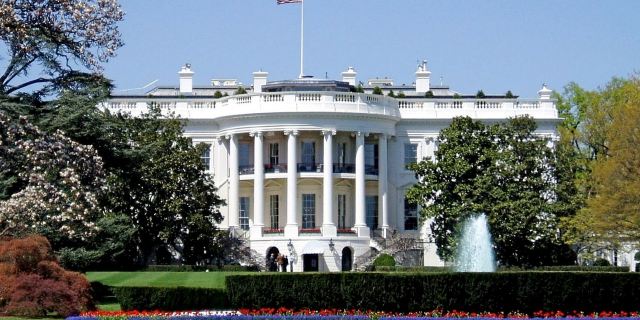



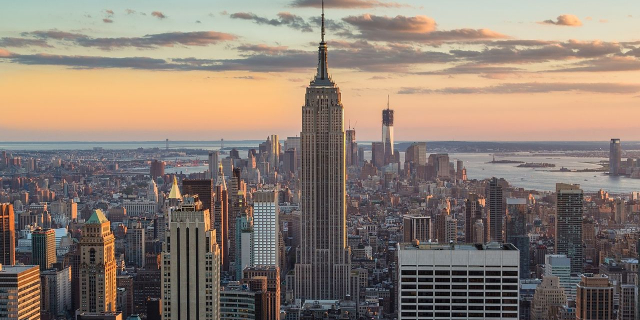



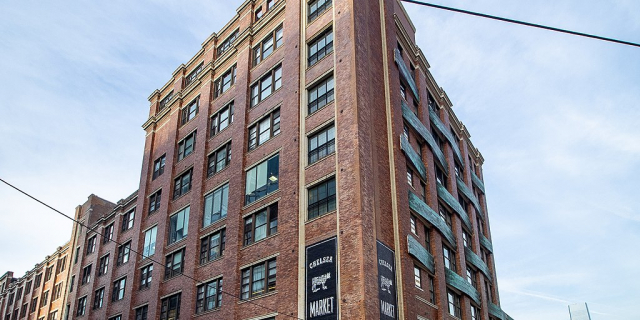



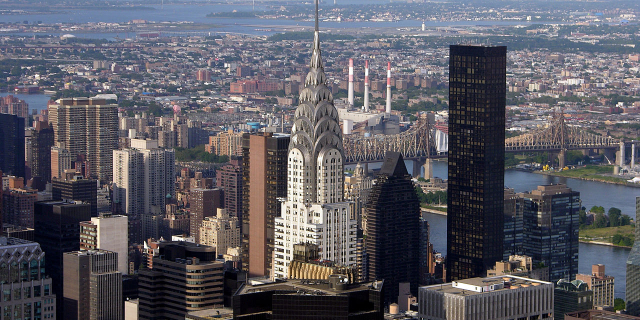







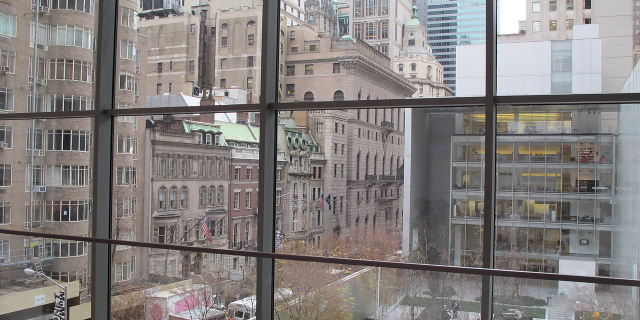








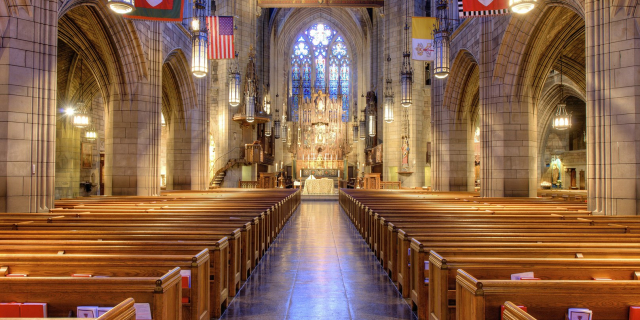

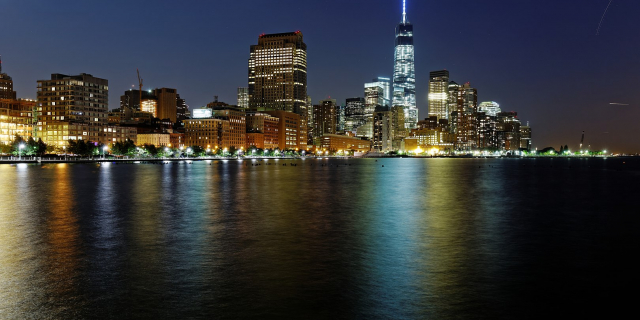
Add new comment